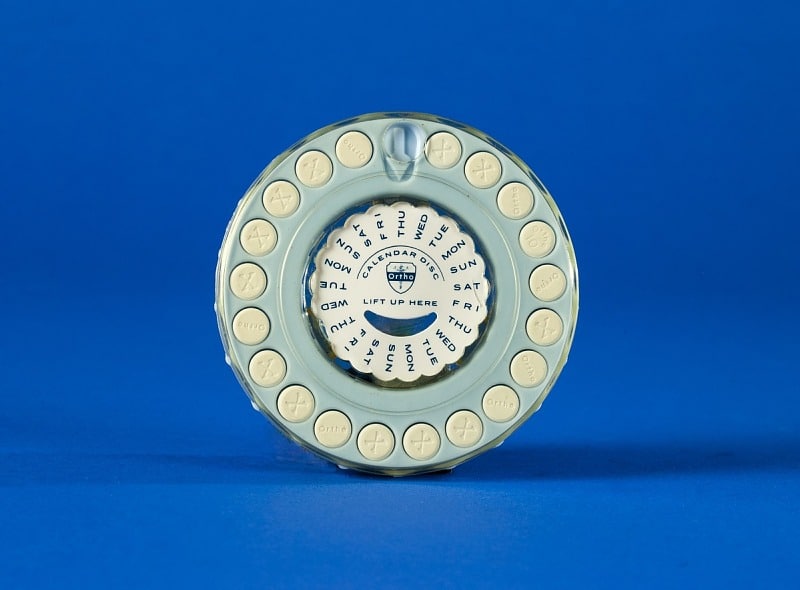Background
By the 1950s, birth control enjoyed wide support from many Americans. Young married couples—not single people—were frequently encouraged to use birth control. Birth control was considered a natural part of creating the “perfect” American family. This was a significant change from the Progressive Era, when public discussion of birth control was socially unacceptable and distributing information about birth control was illegal.
But the development of a birth control pill for women changed the conversation. “The pill” was approved for medical distribution in 1960. Taking one pill daily was almost 100 percent effective in preventing pregnancy. It was the first highly effective birth control that women could use independently. This new independence led to deep divisions and debates. Many Americans who generally supported birth control hated the pill. They argued that it would encourage women to have sex outside of marriage, which would disrupt the stability of American life. Feminist activists celebrated the pill for the very same reason. They saw it as a tool for women’s liberation from domesticity and gender inequality.
There were many public debates about the pill’s potential for social disruption. However, the actual connection between the sexual revolution of the 1960s and the pill is hard to measure. The majority of early pill users were married women. The pill was only administered by doctors, who often held conservative beliefs about who should be having sex. Therefore, many sexually active single women found it difficult to benefit from the pill’s liberating effect.
About the Artifacts
This is a case designed for holding the pill. Women on the pill had to take it every day at the same time. Cases for the pill were designed to help women maintain this daily routine. In this design, each pill aligns to a day of the week. The user could see at a glance if she took her pill that day. Pill cases were also designed to fit into a woman’s purse and to reflect a more feminine look.
Vocabulary
- oral: Taken via the mouth, like a pill.
- liberation: The act of freeing someone.
- post-war: Referring to the period after World War II.
Discussion Questions
- What do you notice about this object? How do you think it works?
- Why was the invention of the pill significant? How did Americans respond to it, and what does this tell you about society’s expectations of women?
- Why is it significant that companies intentionally designed new packaging for women’s birth control pills?
- The pill was the first effective birth control method that women could use alone. Why is that significant? How might that have changed relationships between men and women?
Suggested Activities
- APUSH Connection: 8.12: Youth Culture of the 1960s
- Lead students through a close inquiry of the pill case. Have them identify the various design elements of the case and consider the significance of these design choices.
- Connect this resource to the life story of Betty Friedan, who experienced the life of both suburban housewife and radical feminist. How does the pill connect to Friedan’s findings in The Feminine Mystique?
- Connect the history of the pill to the film of the shopping center and the photographs of the Glasgow Village suburban development. Ask students to think about how the pill contradicted the family ideal depicted in these resources.
- Gloria Steinem was an early vocal supporter of the pill’s use by single women. Have students study this resource in conjunction with her testimony about the Equal Rights Amendment. Ask students to think about why Steinem was a supporter of the pill and how it connects to her view of women’s liberation.
Themes
AMERICAN CULTURE; SCIENCE, TECHNOLOGY, AND MEDICINE; DOMESTICITY AND FAMILY







